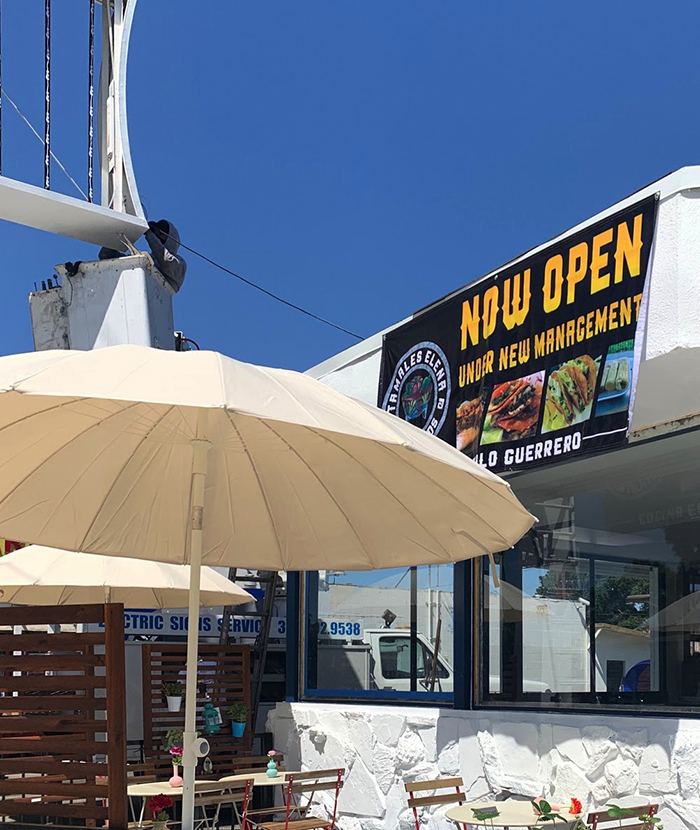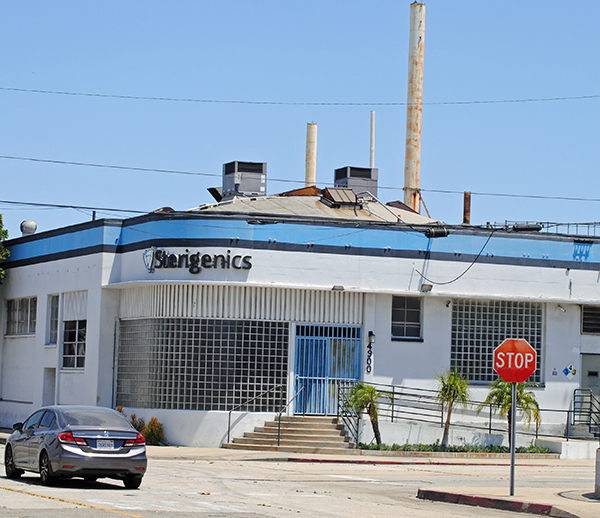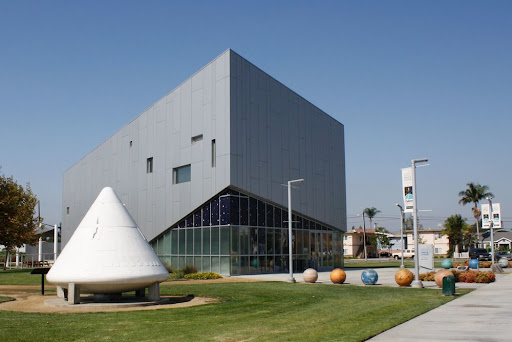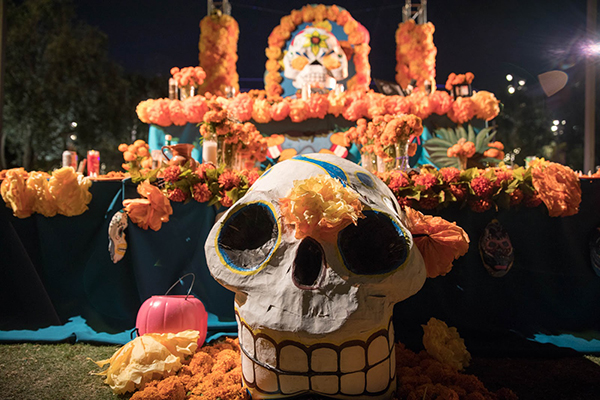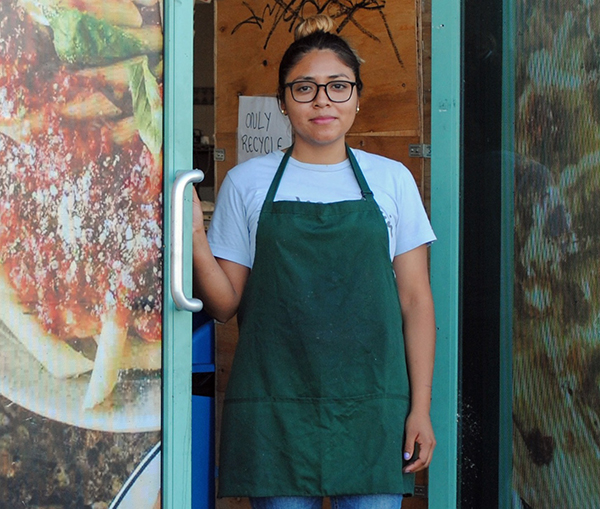Residents voice traffic, health concerns at transit workshop
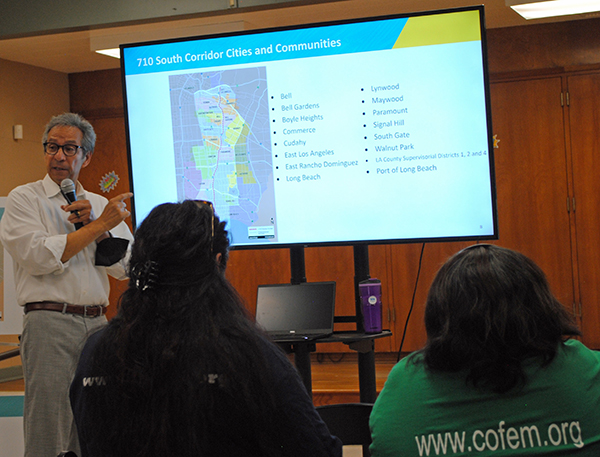
By Alfredo Santana
Contributing Writer
BELL GARDENS — Irma Lopez wants the Metropolitan Transportation Authority to listen to her plight and reduce carbon emissions from cargo trucks and vehicles running along the Long Beach (710) Freeway corridor that cause asthma and bronchitis cases.
To voice her concerns last week, Lopez attended a community workshop focusing on the MTA’s plans to invest $730 million along the 19-mile corridor in a myriad of programs to improve transportation for people and goods, retrofit streets to make room for bicycle lanes and buses, build shared roads for pedestrians and bikes and many others changes.
Organized by the nonprofit SELA Collaborative in partnership with the MTA, the in-person gathering provided residents a rare opportunity to meet with transportation officials who discussed a series of tools available to make remarks for changes along the freeway’s south corridors and forward them to county supervisors and working groups.
“I like the fact they started to include us,” Lopez said. “These workshops are welcomed in communities heavily impacted on our health, and I hope they consider our comments and go on to do what we are asking for. We need the 710 freeway to be zero emissions.”
The two-hour workshop was conducted by Robert Calix, a former transportation, planning and communications manager with the MTA and current chief of planning, strategy and innovation with the North County Transit District in Oceanside.
Calix told a gathering of about 30 participants at the Bell Gardens Veterans Park Senior Center, that the MTA plans to leverage the money in projects that receive input from local residents and give voice to communities previously ignored before plans to widen the freeway were dropped.
Equipped with a large monitor, a laptop and customized signs, Calix ran a series of slides with images showing potential projects the MTA would appraise, such as added canopies at bus stops, streets reconfigured with bus-only lanes and bikes.
Other projects are calming traffic features like turnarounds, programs to add air filters in schools, electric vehicle charging stations for cars and trucks, integrated soundwalls to protect residential areas, and measures to improve traffic flow on the freeway and at offramps.
Calix said the MTA has $50 million to help local small truck owners engaged in freight moving from the ports of Los Angeles and Long Beach to purchase electric units, and for community proposals to install electric vehicle charging stations for vehicles and trucks along the corridor.
“Supervisors Janice Hanh and Hilda Solis and the City Council want to know what is going on in your city that they would improve in transportation,” Calix said. “These goals are the guidelines for the projects MTA wants to see.”
MTA staff set up about a dozen iPads at two tables located near the entrance for the participants to fill in a survey found by clicking an interactive map of the corridor at www.metro.net/710-hub.
Among other questions, visitors to the online site should answer what corridor areas need improvements to tame vehicle carbon emissions, noise and suggest solutions to make walking and the use of bikes safer in neighborhoods where large trucks often use residential streets.
Before the workshop began, the interactive map did not display any urban intersections in Bell Gardens picked by residents to address unsafe transportation issues, or areas that may benefit with new or revamped programs.
At the end of the session, at least four icons were added that spotted dangerous roads for pedestrians and the impact cargo trucks cause to parks and streets by taking shortcuts, like potholes and bottlenecks.
“Your voice is going to be worth the investment because you were speaking for those who speak Spanish in these communities and aren’t here,” Calix told the attendants.
With 65% of all countywide bus and light rail train riders being Spanish speakers, it is imperative for the MTA to gather feedback from them about what projects they support, because in the end not all would be funded, he said.
Now that COVID-19 infections are on the wane and indoor masking is optional, similar in-person workshops are being planned to link residents from communities like Vernon, a city with only 125 inhabitants where map input is zero, and Huntington Park.
Alberto Campos, SELA Collaborative associate director, said his group works with seven cities and unincorporated county zones like Florence-Firestone and Walnut Park to coordinate efforts with public agencies to cover issues of importance and promote civic engagement.
“One way of doing it is to set up meetings like this,” Campos said. “We partner with our network so issues can be addressed and strengthen SELA communities, like the volume of feedback [needed] so [the MTA] can tailor them to the local needs,” Campos said.
However, installing electric vehicle charging stations in low-income communities mostly inhabited by Latinos and Blacks has raised fears of gentrification and future displacements while a patchwork of safeguards for tenants slowly roll out in each city.
Cudahy resident Maria Saturnino said the MTA should discuss how to protect tenants from being removed, and how to leverage assistance to buy solar panels and ensure water is free from chemicals.
“I think solar panels would help us get clean energy and reduce so many health issues linked to dirty air,” Saturnino said. “We also need clean drinking water to cook. We need water filters. We should discuss these issues more.”
Lopez suggested large trucks should be banned from residential streets and urged the agency to tap resources to assist working class residents from being displaced as new and expensive technologies made their way to get rid of fossil fuels pollution.

